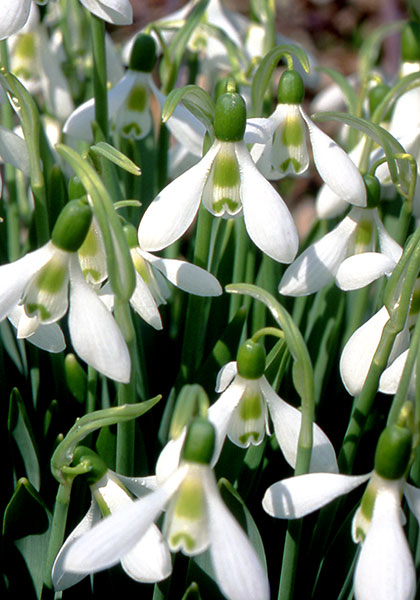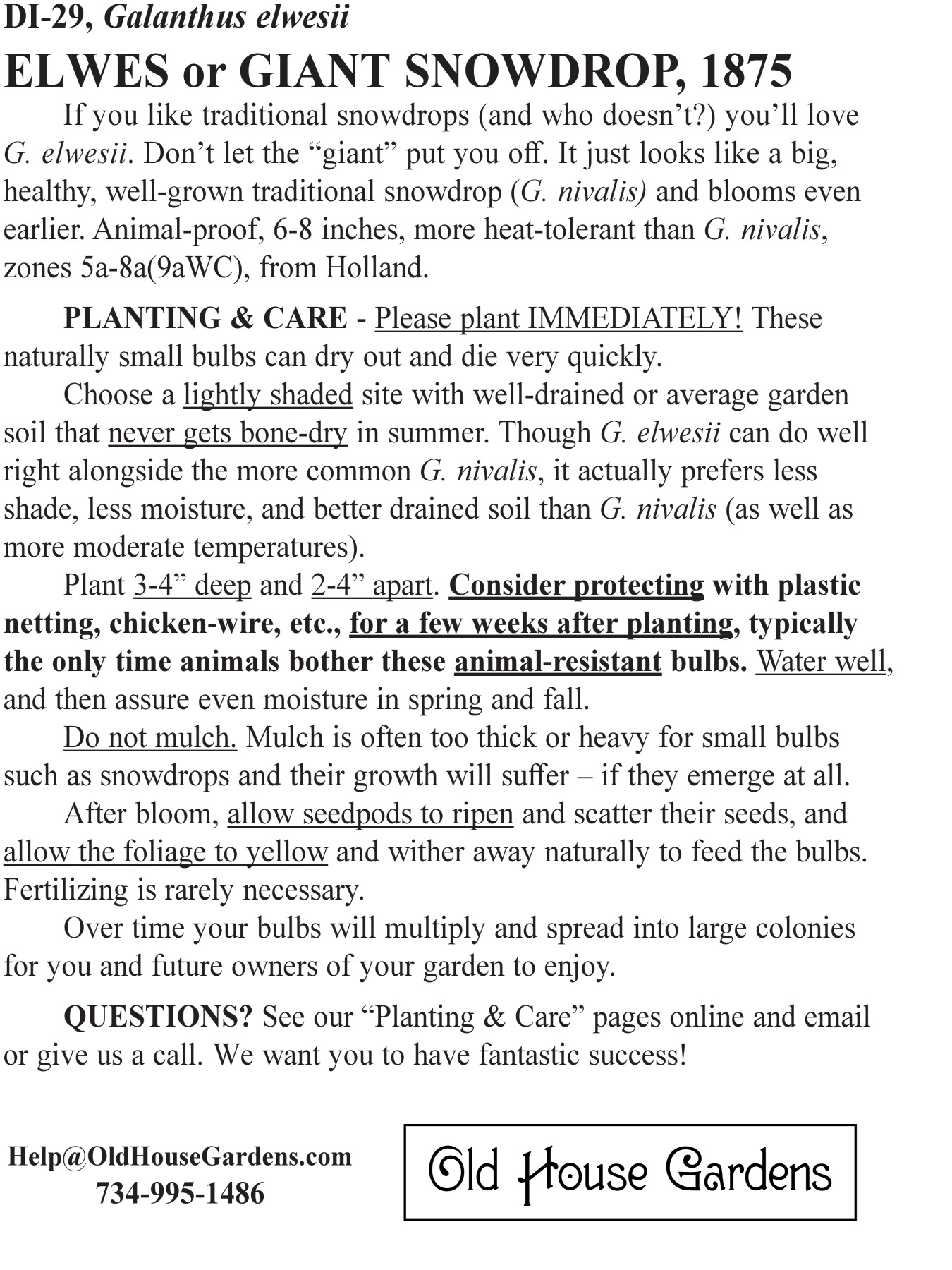|
|

 
|
|
If you like traditional snowdrops (and who doesn’t?), you’ll love G. elwesii. Don’t let the “giant” in its name put you off. It simply looks like an especially robust, well-grown G. nivalis and blooms even earlier. Animal-proof, 6-8”, more heat-tolerant than G. nivalis, zones 5a-8a(9aWC), from Holland.
SOLD OUT
|
|
SUB TYPE wildflower ZONES 5a-8a(9aWC) HEIGHT 6-8” BLOOM SEASONS very early spring LIGHT half sun, light shade |
PLANTING & CAREPlant ASAP when you receive them in October. The naturally small bulbs of Galanthus can dry out and die very quickly in storage (Despite modern hype, however, planting “in the green” is not essential for success). Choose a lightly shaded site with well-drained or average garden soil that never gets bone-dry in summer. Though G. elwesii can do well alongside the more common G. nivalis, it actually prefers less shade, less moisture, and better drained soil than G. nivalis (as well as warmer temperatures). Plant 3”-4” deep and 2”-4” apart. Consider protecting with plastic netting, chicken-wire, etc., for a few weeks after planting, typically the only time critters bother these animal-resistant little bulbs. Water well, and then assure even moisture in spring and fall. Do not mulch. Mulch is often too thick or heavy for small bulbs such as snowdrops and their growth will suffer – if they emerge at all. After bloom, allow seedpods to ripen and scatter their seeds, and allow the foliage to yellow and wither away naturally to feed the bulbs. Fertilizing is rarely necessary. Over time your bulbs will multiply and spread into large colonies. Learn more about growing and enjoying snowdrops at our Fall Diverse Newsletter Archives and Bulbs as Cut-Flowers page. |

|
SPRING
|
· |
SUMMER
|
· |
FALL
|
· |
LEARN MORE
|
· |
ORDERING
|

|










